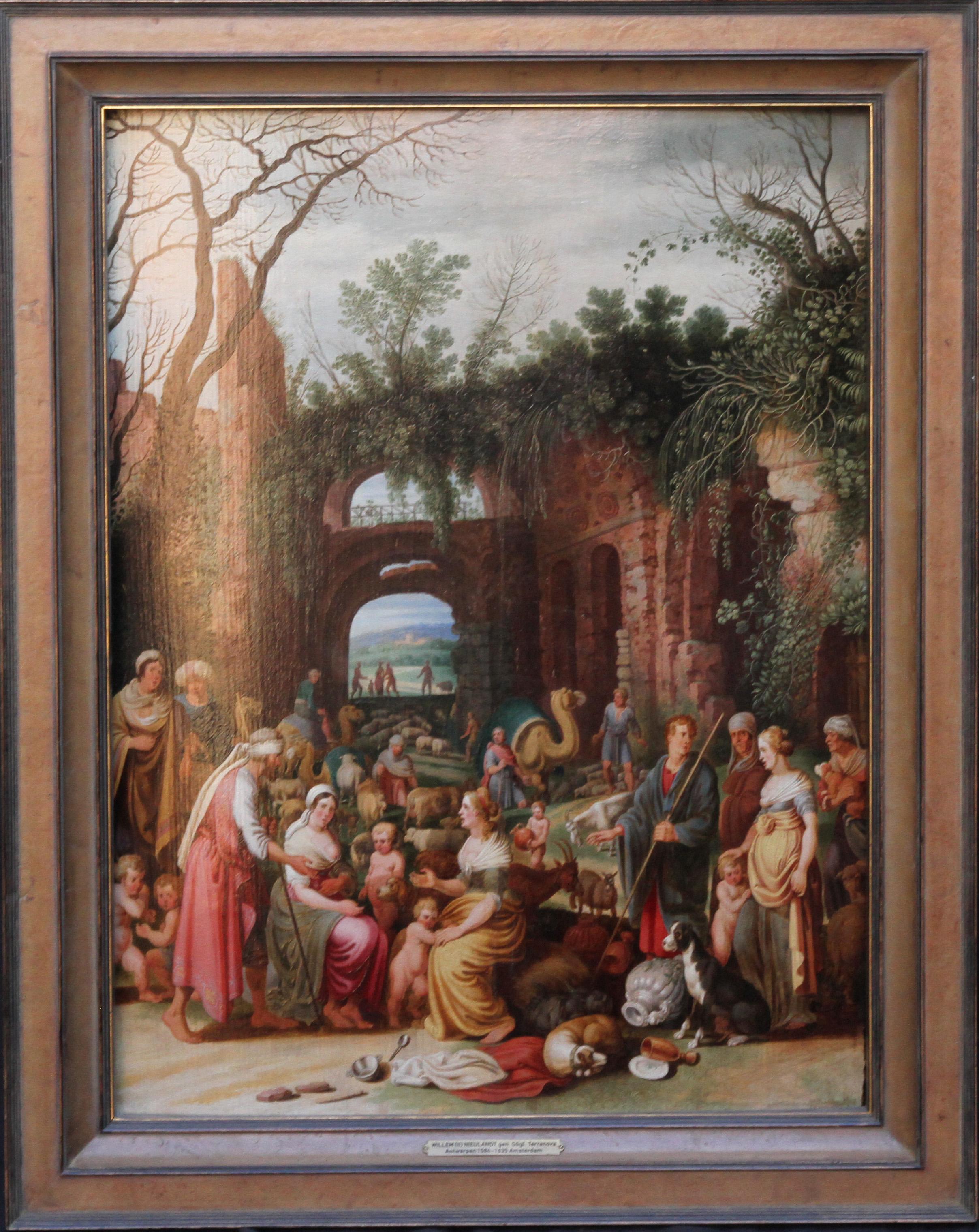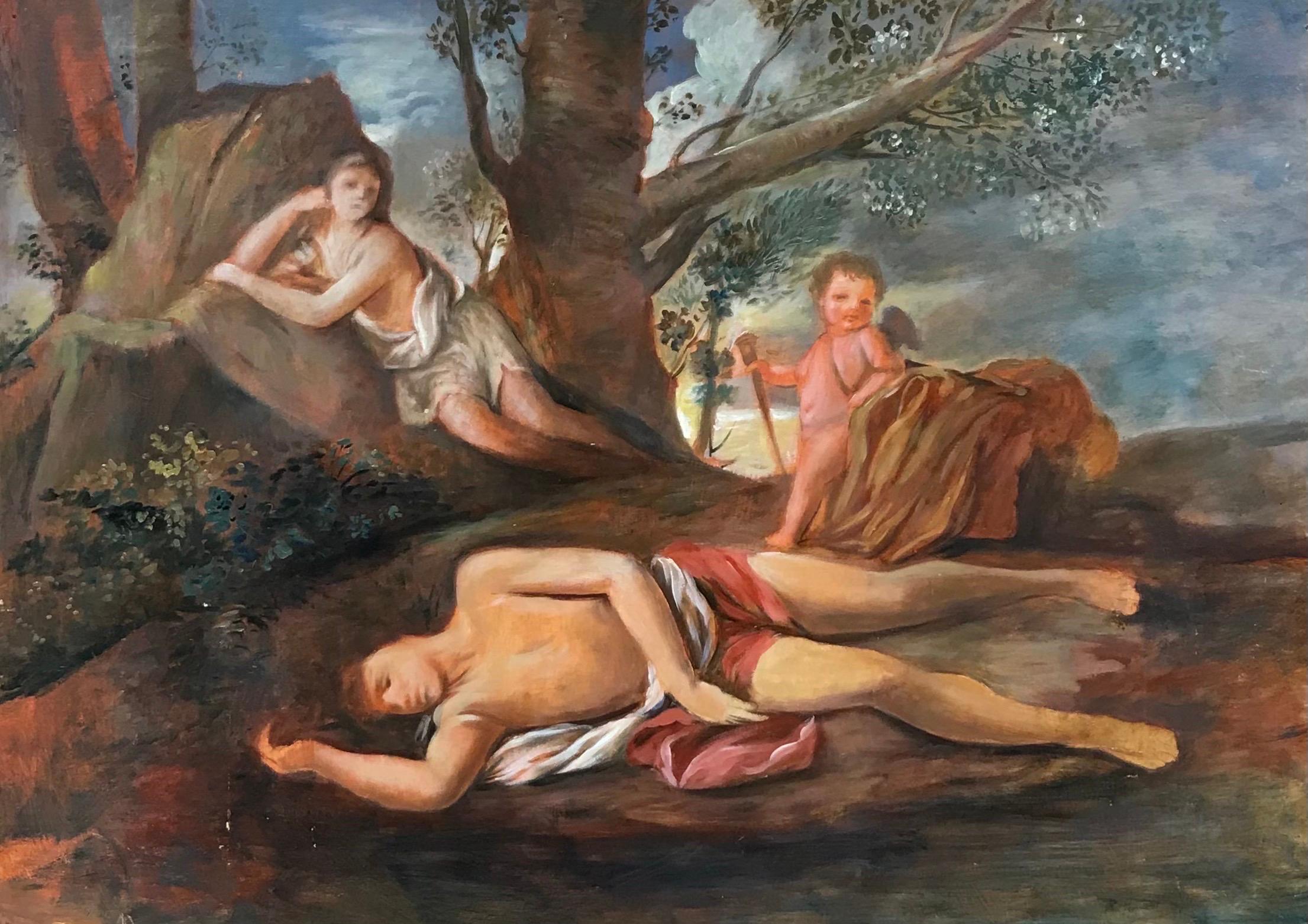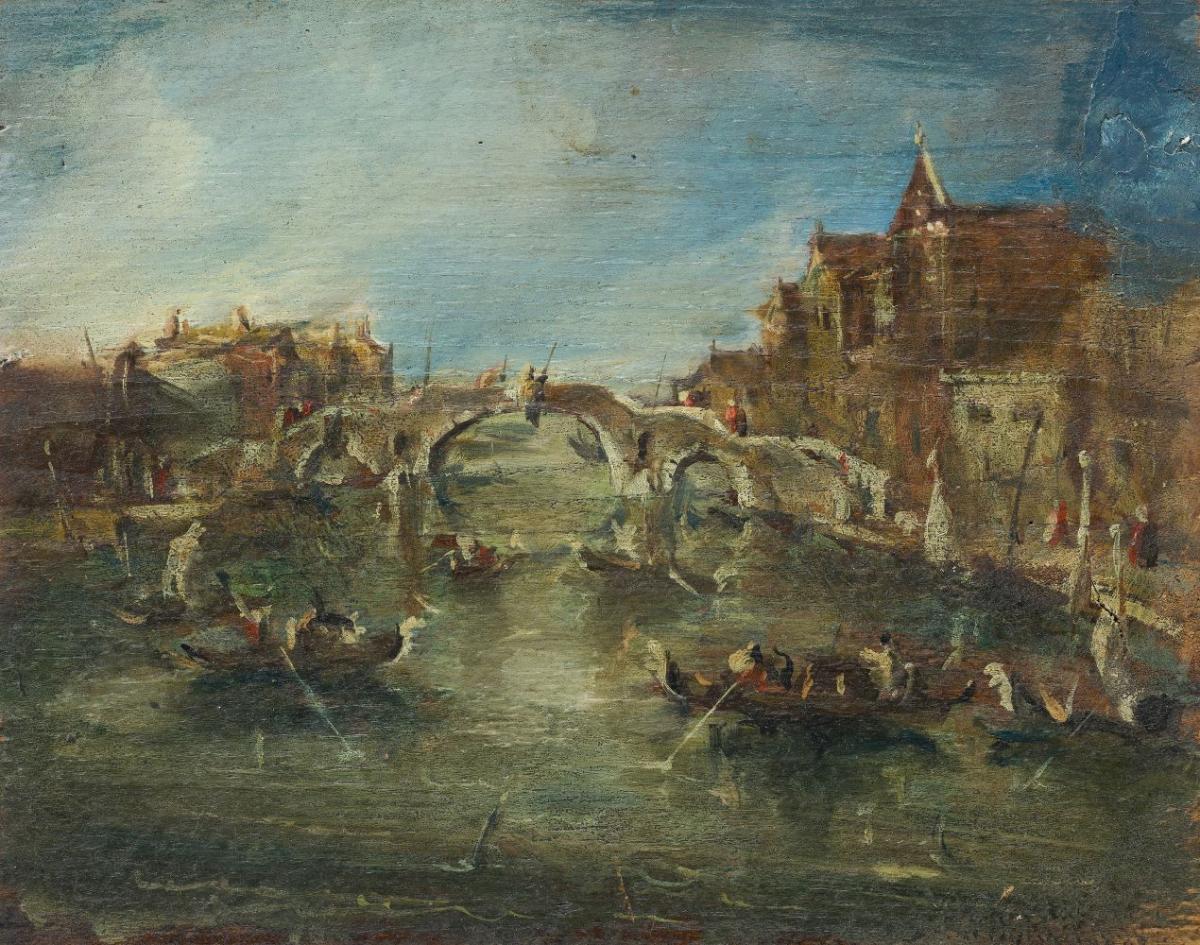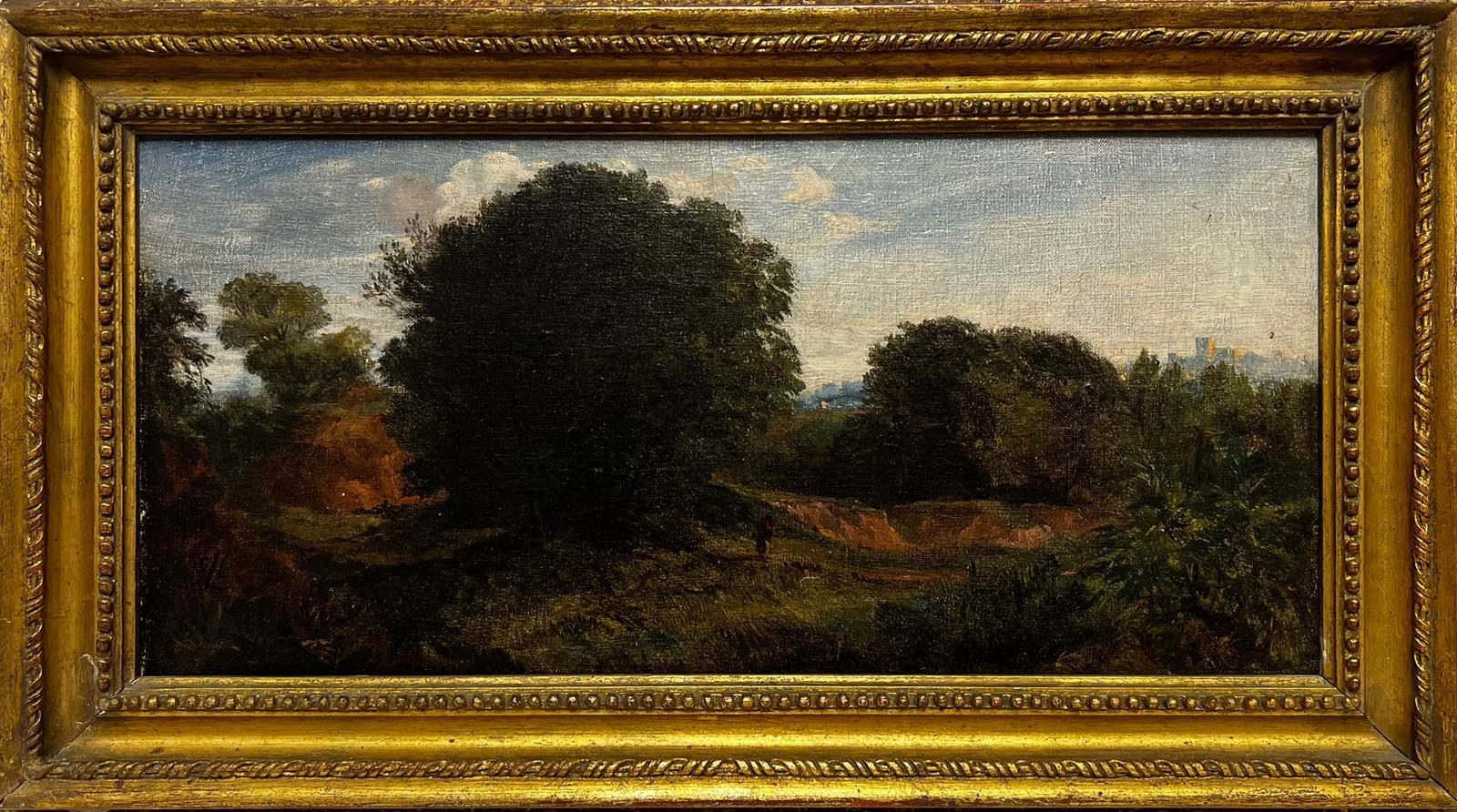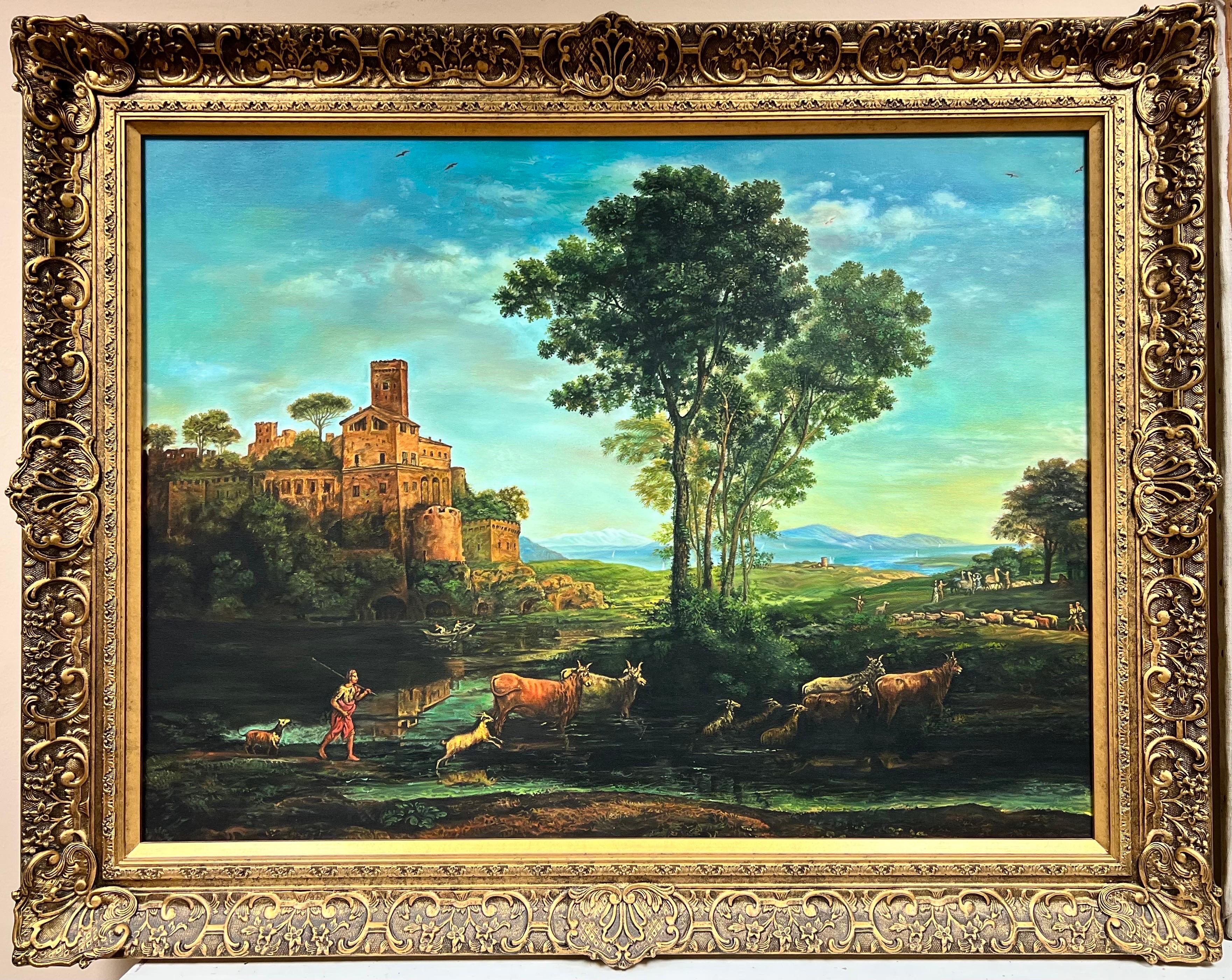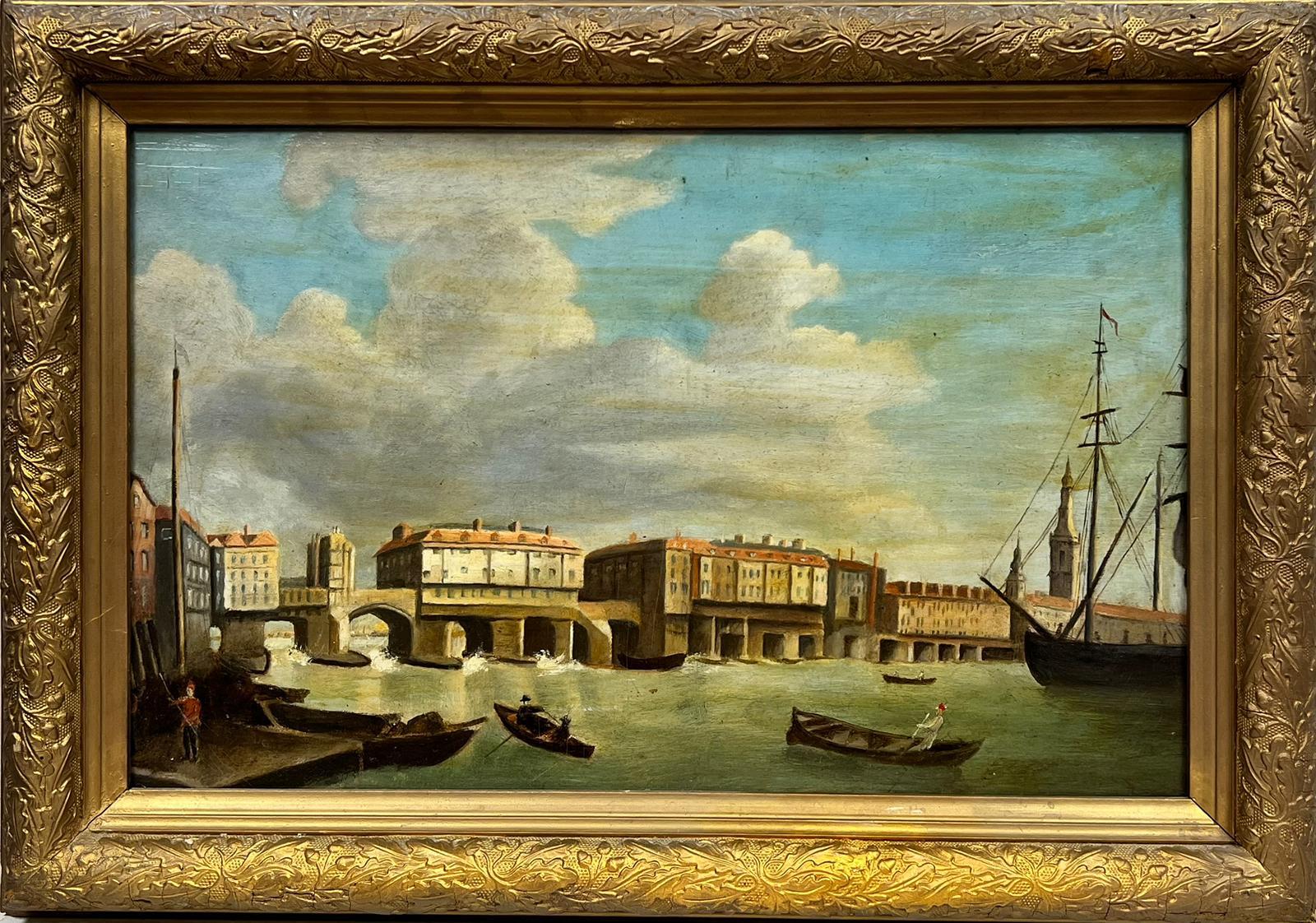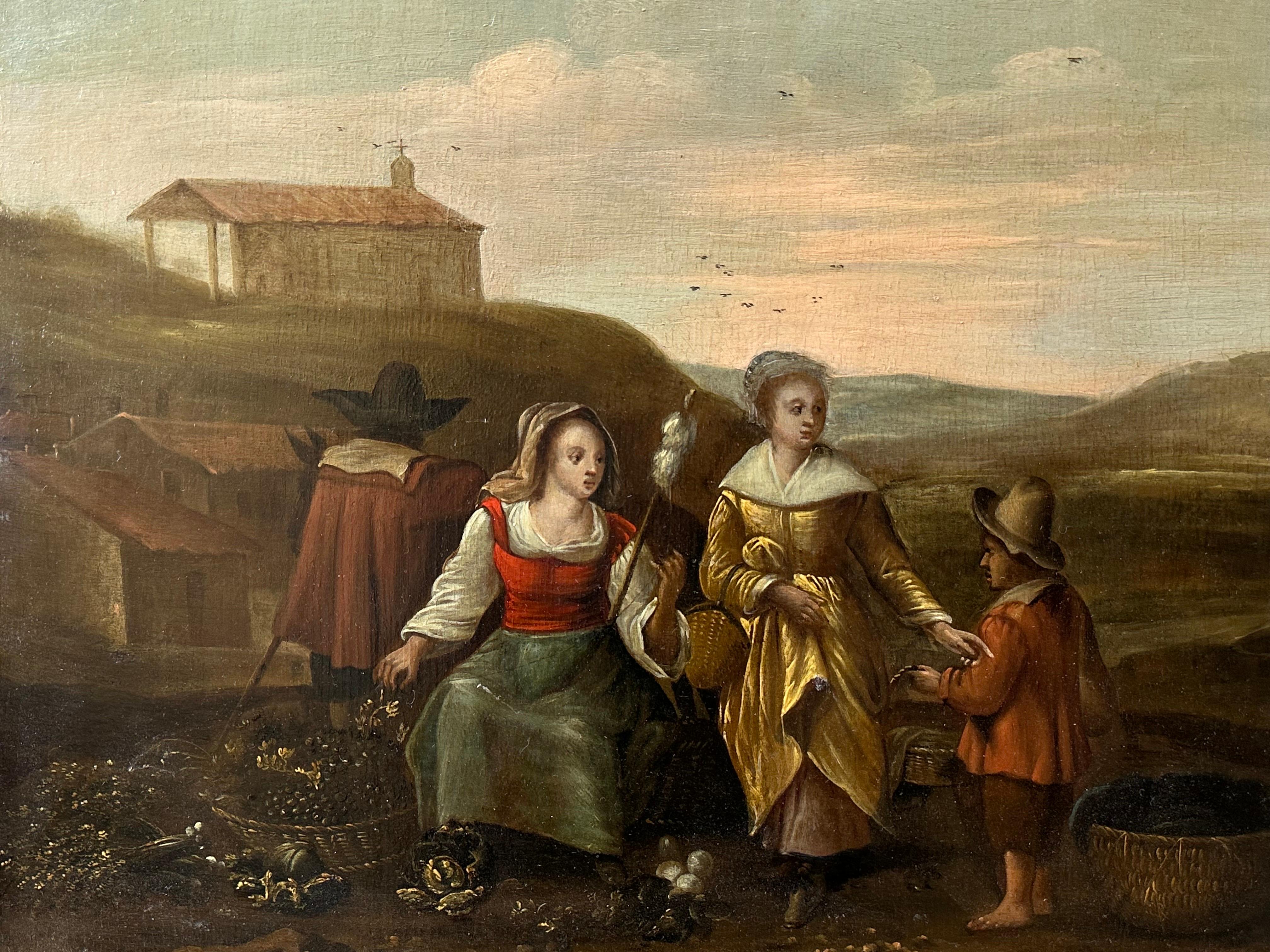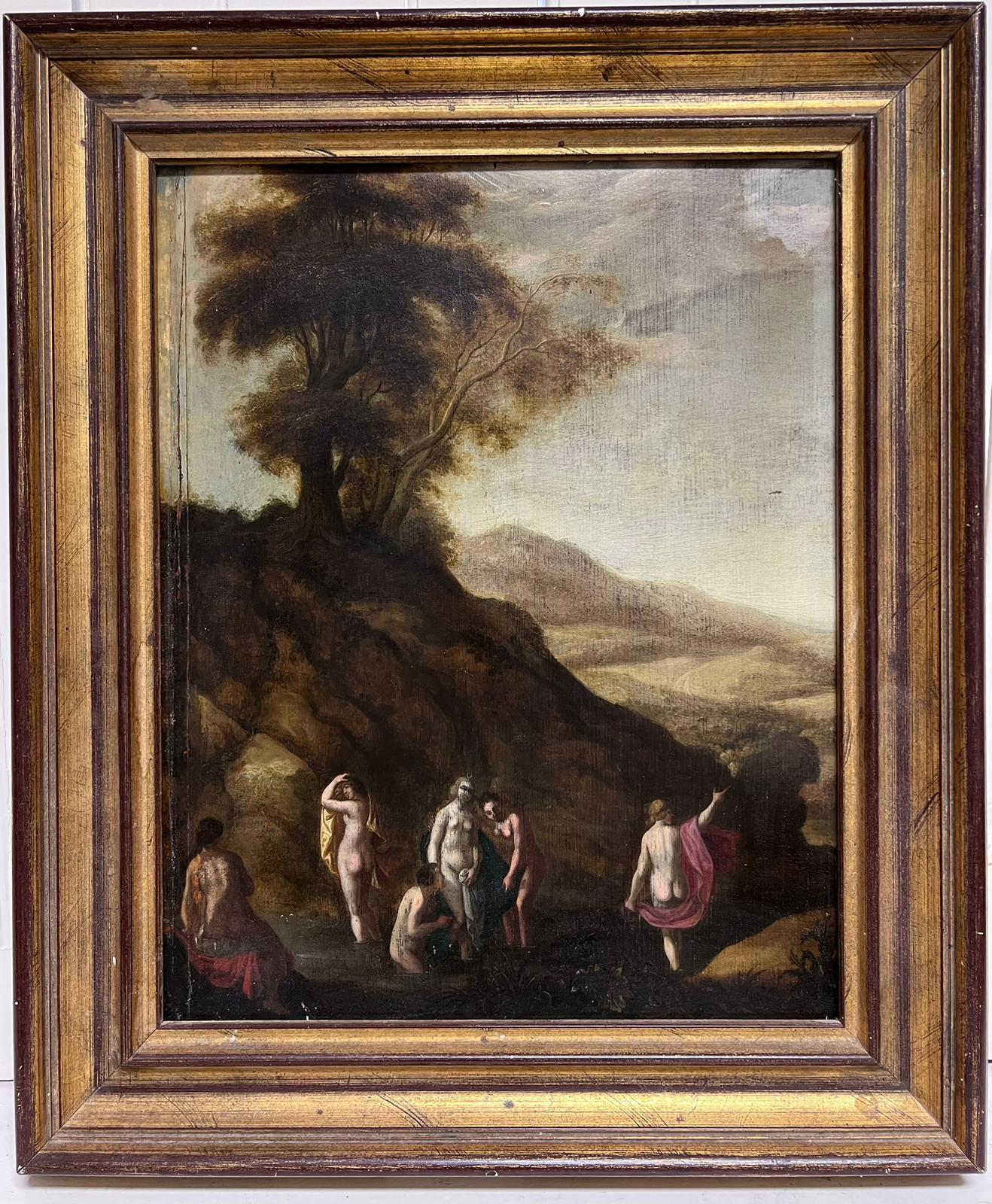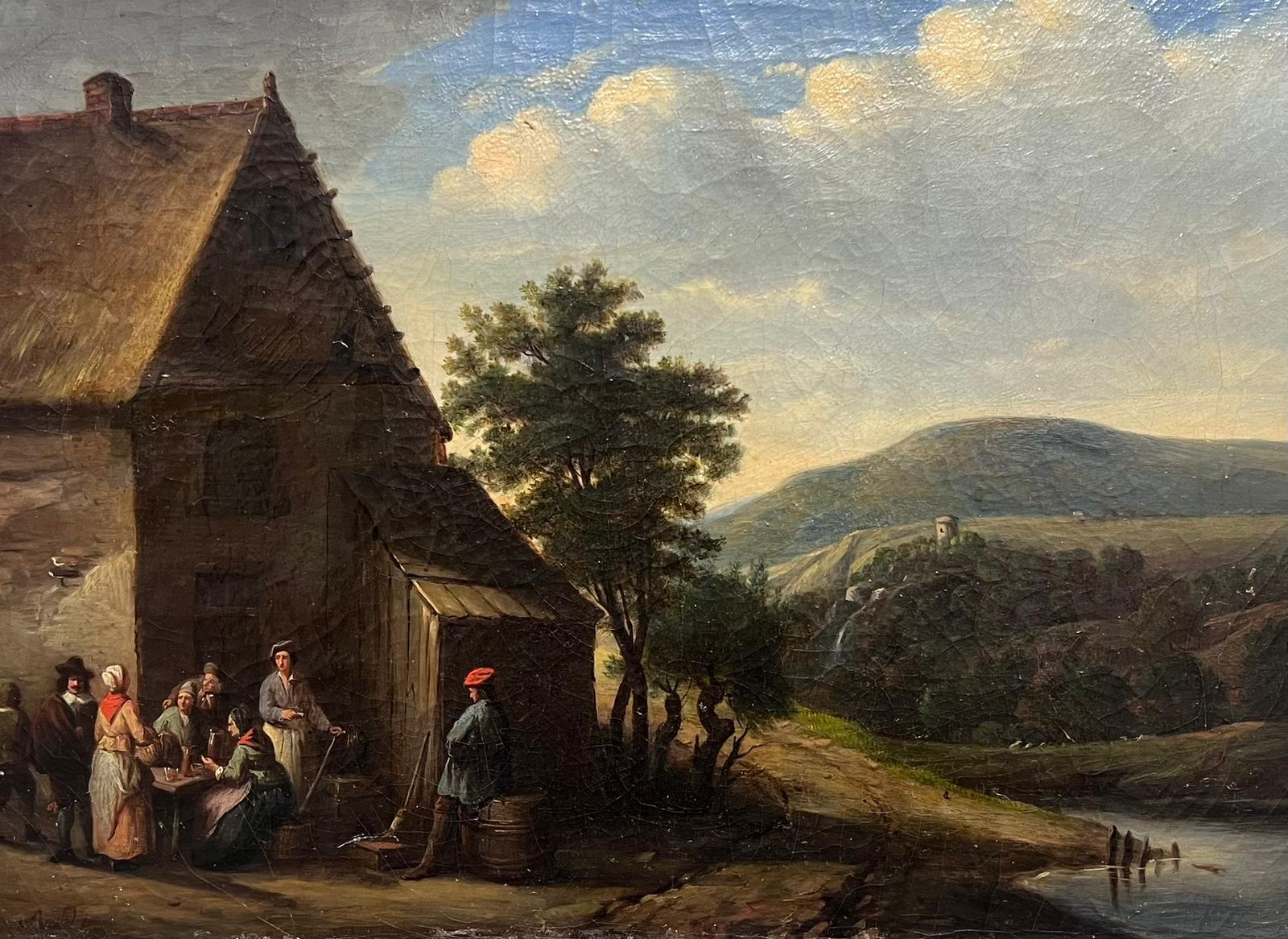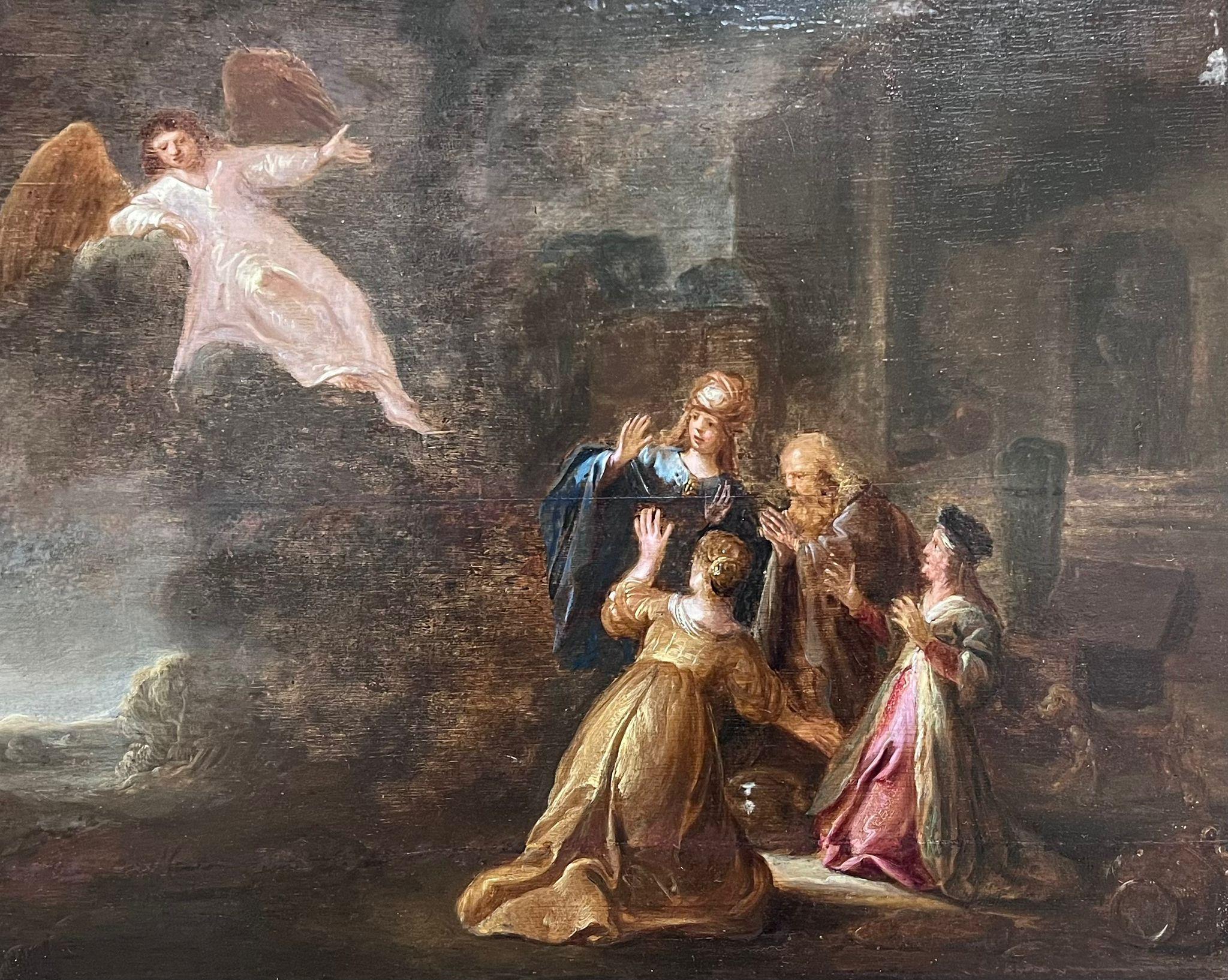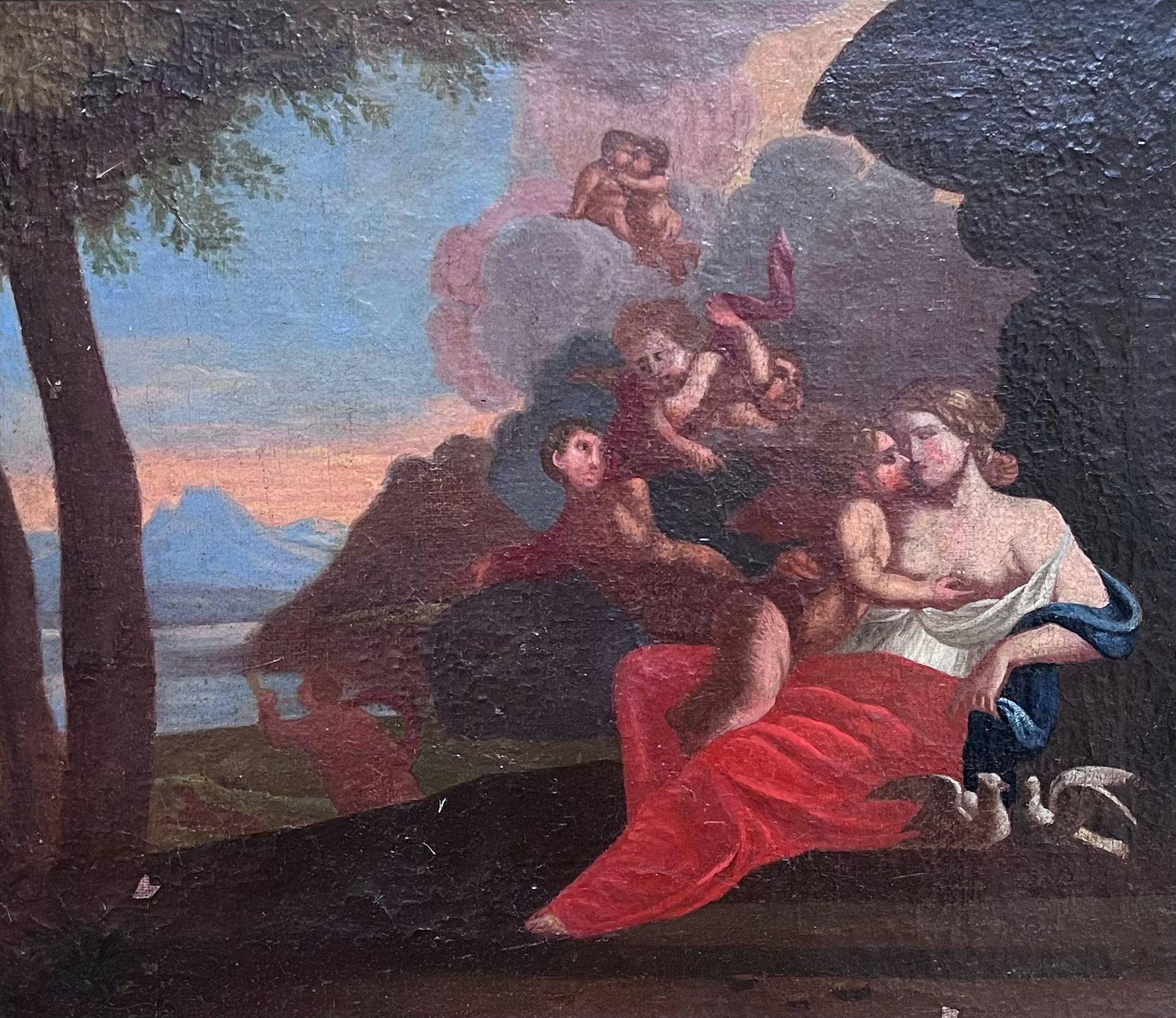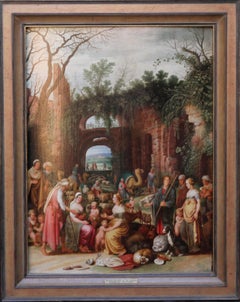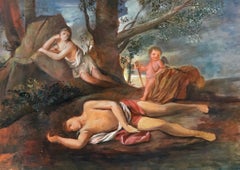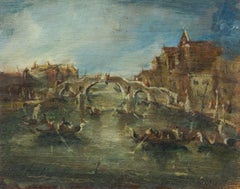Fire & Moonlight - Important 18th Century Old Master Oil Painting London Night
View Similar Items
Want more images or videos?
Request additional images or videos from the seller
1 of 15
Abraham PetherFire & Moonlight - Important 18th Century Old Master Oil Painting London Night1790
1790
$50,418.91List Price
About the Item
- Creator:Abraham Pether (1756 - 1812, British)
- Creation Year:1790
- Dimensions:Height: 28 in (71.12 cm)Width: 34 in (86.36 cm)Depth: 3 in (7.62 cm)
- Medium:
- Movement & Style:
- Period:1790-1799
- Condition:
- Gallery Location:Gerrards Cross, GB
- Reference Number:1stDibs: LU741315439552
About the Seller
5.0
Platinum Seller
Premium sellers with a 4.7+ rating and 24-hour response times
Established in 2012
1stDibs seller since 2017
154 sales on 1stDibs
Typical response time: 5 hours
Associations
LAPADA - The Association of Arts & Antiques DealersInternational Confederation of Art and Antique Dealers' Associations
Authenticity Guarantee
In the unlikely event there’s an issue with an item’s authenticity, contact us within 1 year for a full refund. DetailsMoney-Back Guarantee
If your item is not as described, is damaged in transit, or does not arrive, contact us within 7 days for a full refund. Details24-Hour Cancellation
You have a 24-hour grace period in which to reconsider your purchase, with no questions asked.Vetted Professional Sellers
Our world-class sellers must adhere to strict standards for service and quality, maintaining the integrity of our listings.Price-Match Guarantee
If you find that a seller listed the same item for a lower price elsewhere, we’ll match it.Trusted Global Delivery
Our best-in-class carrier network provides specialized shipping options worldwide, including custom delivery.More From This Seller
View AllSpectacular Large 19th Century Italian Oil Painting of Jerusalem & Crucifixion
By Pietro Sassi
Located in Gerrards Cross, GB
'Calvary' by Pietro Sassi (1834-1905).
This monumental exhibition oil painting – which depicts the Light of Heaven shining upon Christ at Calvary with thousands of people outside t...
Category
Mid-19th Century Old Masters Figurative Paintings
Materials
Oil
Important 18th Century Royal Academy Oil Painting of Georgian London Festival
Located in Gerrards Cross, GB
‘St. James’ Day’ by Richard Morton Paye (1750-1820).
This large and important 18th century oil on canvas depicts a diverse crowd of Londoners at an oyster stand on a summer’s eveni...
Category
1780s Old Masters Figurative Paintings
Materials
Oil
$279,294 Sale Price
20% Off
Vale of the Conwy, Snowdonia - 19th Century Oil Painting Wales Landscape
Located in Gerrards Cross, GB
‘Vale of the Conwy’ by Samuel Lines (1778-1863). The painting – which depicts a single female figure in Welsh dress walking with a goat in an extensive mountain landscape – is signed...
Category
Early 19th Century English School Landscape Paintings
Materials
Oil
$11,160 Sale Price
20% Off
19th Century Oil Painting of St Mark's Square in Venice from the Ducal Palaca
By Edward Pritchett
Located in Gerrards Cross, GB
‘Piazza San Marco from the Palazzo’ by Edward Pritchett RWS (1807-1876).
The painting – which depicts St. Mark’s Square and the Campanile seen from the Porto della Carta entrance to...
Category
Mid-19th Century English School Landscape Paintings
Materials
Oil
19th Century Oil Painting Victorian Holiday Summer Landscape Royal Academy 1859
Located in Gerrards Cross, GB
‘A Day in the Country’ by William Frederick Witherington R.A. (1785-1865).
The painting – which depicts a group of Victorian figures on a summer’s day before an extensive landscape ...
Category
1850s Victorian Landscape Paintings
Materials
Oil
19th Century English Impressionist Oil Painting Girls & Dogs on Beach in Spring
Located in Gerrards Cross, GB
‘A Breeze after a Bathe’ by Walter Duncan ARWS (1847-1932).
The painting – which depicts three young Victorian ladies and their dogs on Bournemouth beach after a swim – is signed b...
Category
1870s Impressionist Figurative Paintings
Materials
Oil
You May Also Like
Laban Demanding the Return of the Teraphim from Rachel - Dutch Old Master art
By Willem van Nieulandt II
Located in London, GB
This very busy oil on panel is a Dutch Old Master painting dating to around 1620 by artist and poet Willem van Nieulandt. It is an incredibly detailed and colourful scene composed of...
Category
17th Century Old Masters Figurative Paintings
Materials
Oil
Travellers and Dogs in Landscape, Ruins on Right - Dutch Old Master oil painting
By Pieter Wouwerman
Located in London, GB
This lovely Dutch Old Master oil painting is attributed to artist Pieter Wouwerman. Painted circa 1660 it is figurative landscape with horseback travellers and their dogs in the foreground with ruins on their right. Beyond is a river and hilly landscape, all in the fading light of approaching dusk. There are some superb details making this an excellent Dutch Golden Age oil painting.
Provenance: Devonshire estate.
Condition. Oil on canvas, 24 inches by 20 inches and in good condition.
Frame. Housed in a complementary gilt frame, 31 inches by 27 inches and in good condition.
Pieter Wouwerman (1623-1682) was a Dutch Golden Age landscape painter. He was born in Haarlem. According to Arnold Houbraken, a biographer of artists from the Dutch Golden Age, Pieter Wouwerman was the brother of the landscape painters Jan and Philips Wouwerman, who, like his more famous brother, made a living selling Italianate landscapes in the manner of Pieter van Laer...
Category
Mid-17th Century Old Masters Landscape Paintings
Materials
Oil
$17,946 Sale Price
20% Off
Mythological Scene Various Classical Figures in Landscape
Located in Cirencester, Gloucestershire
Artist/ School: French School, 20th century
Title: Mythological Scene with Figures in Classical Landscape
Medium: oil painting on board, unframed
Size:
board: 19.75 x 27 inches
...
Category
20th Century Old Masters Figurative Paintings
Materials
Oil
$1,221 Sale Price
88% Off
Fine Antique Italian Oil Cannaregio Canal Venice Busy Figurative Scene
Located in Cirencester, Gloucestershire
View on the Cannaregio Canal, Venice
Italian School, 19th century, after Francesco Guardi, Italian 1712-1793
oil on panel
Painting: 8 x 10 inches
condition: overall very sound, with ...
Category
19th Century Old Masters Landscape Paintings
Materials
Oil
Early 1800's English Oil Painting Figure in Rural Woodland Landscape, original
By circle of John Constable
Located in Cirencester, Gloucestershire
Artist: English School, early 1800's, circle of John Constable (British 1776-1837)
Title: The Woodland Path
Medium: oil on canvas, framed, unsigned
Size: 12 x 22 inches
Picture: 9 x 18 inches
Provence: from a private collection in East Anglia...
Category
Early 19th Century Old Masters Landscape Paintings
Materials
Canvas, Oil
$3,336 Sale Price
30% Off
Large Classical Oil Painting Figures Animals in Arcadiane Landscape, framed
By Continental School
Located in Cirencester, Gloucestershire
Classical Landscape
Continental School, late 20th century
signed oil on canvas, framed
framed: 34 x 43 inches
canvas: 27 x 34 inches
provenance: fr...
Category
20th Century Old Masters Landscape Paintings
Materials
Oil
